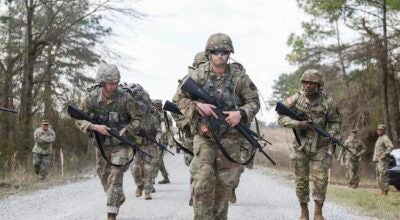Louisiana’s live bait industry under duress after 4 hurricanes in 2 years
Published 12:00 am Saturday, July 9, 2022
|
Getting your Trinity Audio player ready...
|
By Ed Lallo/Gulf Seafood News
NEW ORLEANS — A variety of factors over the past years have melded together, placing live bait shop owners under duress; frequent hurricanes, oil spills, dead zones and fish kills in the Gulf, as well as an ever changing landscape of waterways due to fresh-water diversions of the Mississippi River. Available, affordable live bait is crucial to the recreational fishing industry, but at the moment it is harder to come by and even more expensive to purchase.
“Live bait is the bait for the people!” said Paul Begue, a Mandeville native with a background in aquaculture and live aquatic animal holding. He and his business partner Dom Graves, a New Orleans native with a similar background who specializes in live aquatic system maintenance, formed the Gulf Coast Live Bait Association to create a unified voice for a disorganized industry. The duo has been surveying the live bait industry since Hurricane Ida dealt a near fatal blow to the state’s seafood complex and acting as a liaison for the industry to the Louisiana Fishing Community Recovery Coalition.
Begue and Graves have built a support network of more than 25 members in the bait industry; including system operators, marina owners, and bait haulers. After Hurricane Ida, Graves drove the Bayou state, surveying more than 40 sites and finding approximately 80% were severely damaged or completely wiped out.
“The recreational fishing industry is a $2 billion industry in the State of Louisiana, covering everything possible; from boat, to trailers, to gasoline sales and of course live bait,” explained Begue. “Live Bait acts as an economic force multiplier; bringing people to marinas who then also launch, purchase fuel, ice, food, etc.“
In the past the importance of live bait has been overlooked for a number of reasons. Approximately 40 operators across the state provide live bait to the recreational fishing community which includes guides, charter-boats, head-boats and the regular Joe who fishes on his own.
“‘Cajunuity’ inspired the live bait industry,” Begue. said. “These were some very creative individuals that said let’s put in a few tanks, pump in some bayou water, flush it through tanks and we can hold live bait.”
What those bait operators put in the tanks were thousands of shrimp, cocahoe minnow and croake; all used for salt water, or brackish water, recreational fishing.
“Shrimp is 90% of what is sold,” the baitfish expert went on to explain. “At a cost of 35-cents each, live bait puts fishermen at a distinct advantage to actually catch fish. Bad fishermen can actually become pretty good fishermen in South Louisiana by using live bait.”
Live bait has become a viable product shops can hold up to 48-hours without loss or mortality. Begue says, “A dead shrimp is not worth anything, they have a very short shelf life. Bait should stay in holding tanks as little time as possible. Once one starts to die, others around it tend also to expire.”
The two aquatic life support experts work with bait shops to keep product alive for longer periods of time. Optimally a tank of bait should be turned every 24-hours, allowing for a daily delivery of fresh bait.
Dom Graves says weekends are bait shops’ biggest days. “Starting on Thursday the shops start to get really busy and it is important to have enough bait in the tanks for arriving fishermen.”
Bait shops tend to be cash businesses buying 60-100 count shrimp for their tanks. These small shrimp are enticing to the 14-15 inch speckle trout and 18-24 inch redfish, fish sizes too small for the commercial market. Availability is not only important to local fishermen, but also the record number of out-of-state recreational fishermen. Like a majority of Gulf States, Louisiana allows only shrimp native to the Gulf of Mexico to be used as bait.
Bait shops either have their own dedicated bait boats to supply their tanks or rely upon on independent suppliers. In addition bait is also shipped via trucks to many other locations along the coast.
Read the full story at https://gulfseafoodnews.com/2022/05/22/louisianas-live-bait-industry-under-duress-after-four-hurricanes-in-two-years/





